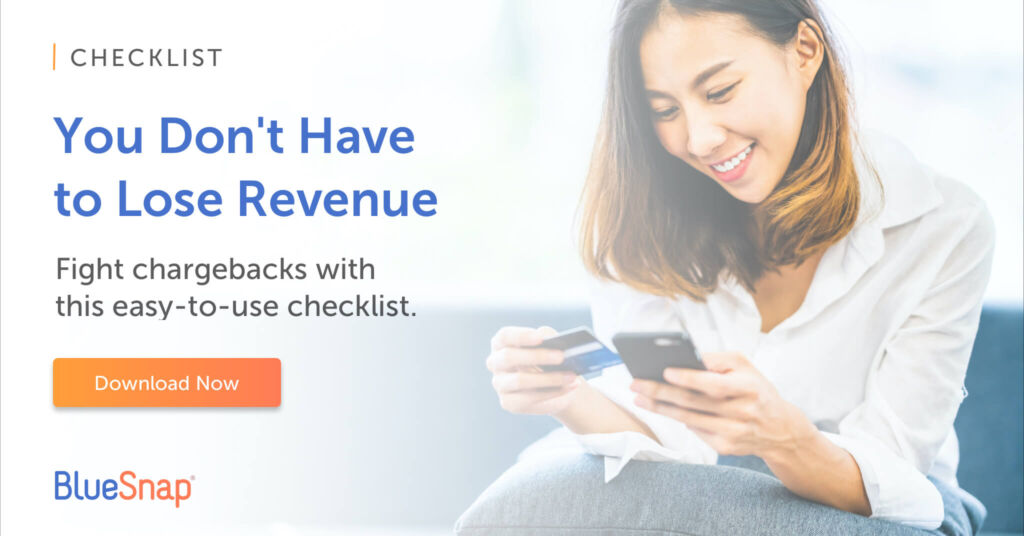Visa has recently announced new rules around disputing chargebacks that will take effect April 15, 2023. Here are summaries of the changes as well as what they mean for you.
Dispute Remedy for Dispute Condition 10.4: Fraud — Card-Absent Environment
For Visa’s reason code 10.4 (Fraud — Card-Absent Environment) disputes, the merchant must include proof of all the following elements:
- Merchandise or services were provided
- The same card number was used in at least two previous transactions processed more than 120 calendar days before the dispute processing date and the issuer had not reported them as fraud to Visa
- The device ID, device fingerprint or the IP address and an additional one or more of the following must match across both undisputed transactions and the disputed transaction:
- Customer account/login ID
- Delivery address
- Device ID/device fingerprint
- IP address
What’s Different: Currently, the Visa compelling evidence rules state you only need to provide evidence of one undisputed transaction to fight a fraud reason code chargeback. There is no defined timeframe within which that transaction must occur.
What This Means: You will need to provide evidence of two or more previous undisputed charges processed on the same card at least four months prior to the disputed charge. These charges and the disputed charge must have at least two identifiers (IP address, device fingerprint/ID, delivery address or customer account login ID) in common.
Compelling Evidence Rules: Evidence of a Link to the Cardholder
When merchants submit evidence linking a cardholder to the shopper, Visa will only accept photographic or email evidence to prove a link between the cardholder and the person receiving the merchandise or services, or to prove that the cardholder disputing the transaction is in possession of the merchandise and/or is using the merchandise or services.
What’s Different: Currently, acquirers can supply evidence that includes (but is not limited to) photographs or emails to prove their case. This new rule limits the allowable proof.
What This Means: This rule change is oddly specific, but the takeaway is that you should always be sure to keep emails and any photos that could be used as evidence in any future disputes. Things like recorded calls or information pulled from your database will not be sufficient.
Compelling Evidence Rules: Evidence of Prior Undisputed Transactions
Merchants may supply evidence that 3+ of the following elements had been used in a previous undisputed transaction:
- Customer account/login ID
- Delivery address
- Device ID/device fingerprint
- Email address
- IP address
- Telephone number
What’s Different: Currently, to meet this requirement, the merchant would need to provide evidence that all the above elements matched with prior undisputed transactions.
What This Means: This change makes fighting chargebacks where you need to supply evidence linking the shopper to the cardholder even easier. While you previously had to provide all of the above information, you now need to provide a minimum of 3 of those items. Of course, you can still provide all of the information if available.
Dispute Condition 13.2: Cancelled Recurring Transaction
Dispute Condition 13.2 must be used only when a cardholder has cancelled the payment method (i.e., they have advised the merchant to stop charging the payment credential). It is not to be used when the cardholder has cancelled the services/merchandise with the merchant.
The issuer will now be required to provide additional details of when and how the cardholder advised the merchant to stop charging the payment credential and, if applicable, provide details of the other payment method provided to the merchant. The issuer must provide the following certifications:
- The cardholder withdrew permission to charge the payment credential and all the following:
- The date the cardholder withdrew permission
- Details used to contact the merchant, such as an email address, telephone number or physical address
- Details of the other form of payment provided to the merchant (if applicable)
No changes have been made for instances when the issuer notifies the merchant that the payment credential was closed or to dispute processing requirements in the Europe region.
What’s Different: Currently, there is no clearly stated rule preventing issuers from initiating chargebacks under this reason code when a cardholder claims to have canceled the services/merchandise with the merchant. Issuers are not currently required to prove the shopper canceled their payment method or provided alternate payment instructions, or how the shopper contacted the merchant.
What This Means: Shoppers will no longer be able to use this reason code to simply cancel their subscription because they think dealing with their bank is easier than canceling their order with the merchant.
Want More Information on Visa’s Chargeback Dispute Rule Update?
Verifi, a Visa solution, has published additional information to help businesses get ready for the April 2023 changes, including:
- Compelling Evidence 3.0 (CE3.0) in the Pre-Dispute and Pre-Arbitration Environments
- Compelling Evidence 3.0 FAQs
And here are some additional insights from our fraud prevention partner, Kount, an Equifax company.
Does disputing chargebacks take too much of your time? Learn how BlueSnap’s Chargeback Management solutions can help.
Related Resources:
- Chargebacks Today: Liabilities & Opportunities Merchants Must Know
- 7 Mistakes Merchants Make When Fighting Chargebacks
- Chargeback vs. Refund: What’s the Difference & How Do You Manage Them?
Frequently Asked Questions
What is a chargeback?
A chargeback is the process initiated by a cardholder when they contact their issuing bank to dispute a transaction on their account. Once initiated, the funds are debited from the merchant and returned to the shopper. A chargeback can be initiated for reasons such as fraud, goods damaged/not received, etc.
How does BlueSnap handle chargebacks?
BlueSnap partners with Chargebacks911, to offer Full-Service Dispute Management and Self-Service dispute management plans. Learn more here.
What is BlueSnap?
BlueSnap helps businesses accept global payments a better way. Our All-in-One Payment Orchestration Platform is designed to increase sales and reduce costs for all businesses accepting payments.
BlueSnap supports payments across all geographies through multiple sales channels such as online and mobile sales, marketplaces, subscriptions, invoice payments and manual orders through a virtual terminal.
And for businesses looking for embedded payments, we offer white-labeled payments for platforms with automated underwriting and onboarding that supports marketplaces and split payments.
With one integration and contract, businesses can sell in over 200 geographies with access to local acquiring in 45+ countries, 110+ currencies and 100+ global payment types, including popular eWallets, automated accounts receivable, world-class fraud protection and chargeback management, built-in solutions for regulation and tax compliance, and unified global reporting to help businesses grow.


